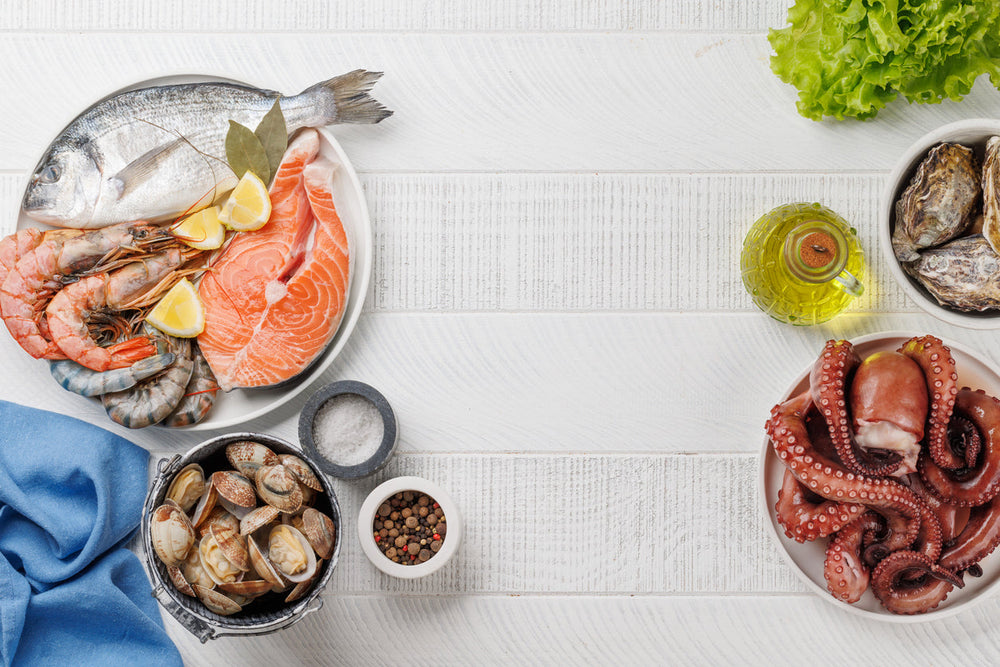Though on closer study each tells a unique story, British and American seafood cultures appear like two chapters from the same marine narrative. From the nostalgic charm of British tin treasures to the bold, regional seafood dishes popular in America, the flavours, traditions, and even the very packaging of these delicacies reflect unique cultural identities.
A Tale of Two Coasts
British seafood:
Having decades of fishing experience, the British have perfected the skill of preserving shellfish, transforming what may have been a meager catch into a staple item from the cupboard. Iconic products such as Princes Tuna & Mayonnaise and John West Sardines in Sunflower Oil evoke images of seaside picnics and cozy kitchens where a can of quality seafood is the answer to a quick, nourishing meal. Though not a seafood product in itself, the always adaptable Argeta Chicken Spread Paste has the same dependability and convenience seen in many British savoury spreads.
American seafood:
In contrast, American seafood culture is a melting pot of regional flavours and techniques. The abundance of lobster, clams, and oysters on the East Coast serves as the inspiration for recipes such as lobster rolls and New England clam chowder. Meanwhile, the West Coast prides itself on sustainably caught salmon, fresh shellfish, and innovative fusion dishes that highlight the natural sweetness of the sea. In the American culinary landscape, seafood is often the star of the show, a dish to be savoured in a bustling restaurant or at a festive family gathering, rather than the quiet convenience of a tin from the cupboard.
Tradition vs. Innovation
British seafood:
British seafood products are as much about tradition as they are about practicality. Their canned goods have been a fixture on supermarket shelves for decades, serving busy families and nostalgic foodies alike. The creamy tang of the mayonnaise mingles perfectly with the robust flavour of the tuna in Princes’ offering, creating a versatile ingredient for everything from sandwiches to pasta dishes.
American seafood:
Across the Atlantic, the American approach to seafood is often rooted in freshness and innovation. The emphasis is on sourcing the very best catch of the day, and then letting the natural flavours shine through. Whether it’s a perfectly seared piece of Alaskan salmon or a spicy shrimp boil inspired by Cajun traditions, the American palate leans towards dishes that celebrate the vibrant, unadulterated taste of the ocean.
Sustainability and Future Trends

British seafood:
In Britain, strict fishing quotas and a renewed commitment to traditional methods have helped preserve not only the quality of seafood but also the natural habitats that support it.
American seafood:
To ensure that future generations may continue to enjoy the abundance of the sea, American attempts to reduce carbon footprints and promote responsible fishing techniques are also changing the sector.
Tradition and innovation are expected to come together in an interesting way as customers in both regions grow more ecologically concerned. Princes Tuna & Mayonnaise's iconic, reliable tin may soon coexist with innovative, environmentally friendly products, providing the best of both worlds.
Who Wins the Seafood Showdown?
So, who comes out on top in the great British vs American seafood debate? Well, it depends on your palate. If you prefer straightforward flavours that let the freshness of the fish shine, British seafood might win your heart. But if you’re after bold spices, rich sauces, and adventurous preparations, American seafood’s diverse offerings could reel you in.
In the end, both nations serve up something spectacular. Whether it’s a humble tin of sardines or a buttery lobster roll, there’s no denying that seafood fans on both sides of the Atlantic are spoiled for choice.


 Christmas 2025
Christmas 2025
 Frozen Food
Frozen Food
 Baking
Baking
 Beans, Peas, Soups & Tins
Beans, Peas, Soups & Tins
 Biscuits, Crackers & Cookies
Biscuits, Crackers & Cookies
 Candy / Sweets
Candy / Sweets
 Crisps & Snacks
Crisps & Snacks
 Chemist / Pharmacy
Chemist / Pharmacy
 Desserts
Desserts
 Gravy, Stock & Paste
Gravy, Stock & Paste
 Haggis
Haggis
 Indian Sauces, Paste and Pickle
Indian Sauces, Paste and Pickle
 Jams & Preserves
Jams & Preserves
 Poppy Appeal
Poppy Appeal
 Pot Noodles & Super Noodles
Pot Noodles & Super Noodles
 Scone Mix
Scone Mix
 Gluten-Free / Free From
Gluten-Free / Free From
 Tea Accessories
Tea Accessories
 Teapot & Tea sets
Teapot & Tea sets
 Tea For One
Tea For One
 Sugar & Creamer
Sugar & Creamer
 Tableware
Tableware
 Serveware
Serveware
 Plates & Trays
Plates & Trays
 Bowls
Bowls
 Cups & Saucers
Cups & Saucers
 Mugs
Mugs
 Silverware
Silverware
 Dinnerware - Accessories
Dinnerware - Accessories
 Dinnerware - For Pets
Dinnerware - For Pets
 Victoria Eggs - Hand-Drawn UK Homeware
Victoria Eggs - Hand-Drawn UK Homeware
 Jewelry & Accessories
Jewelry & Accessories
 Sale
Sale
 Christmas Gifts
Christmas Gifts

